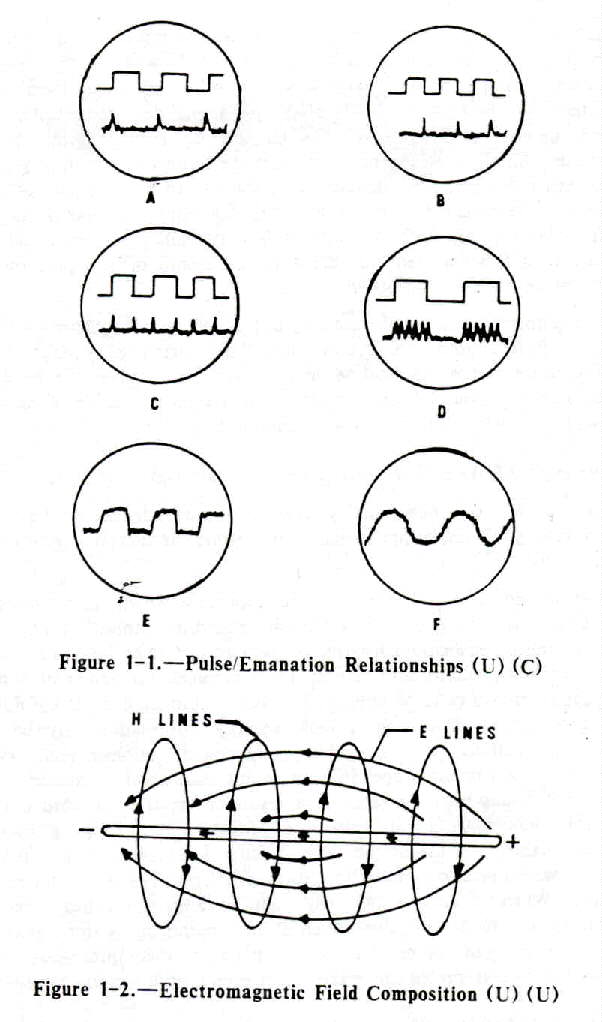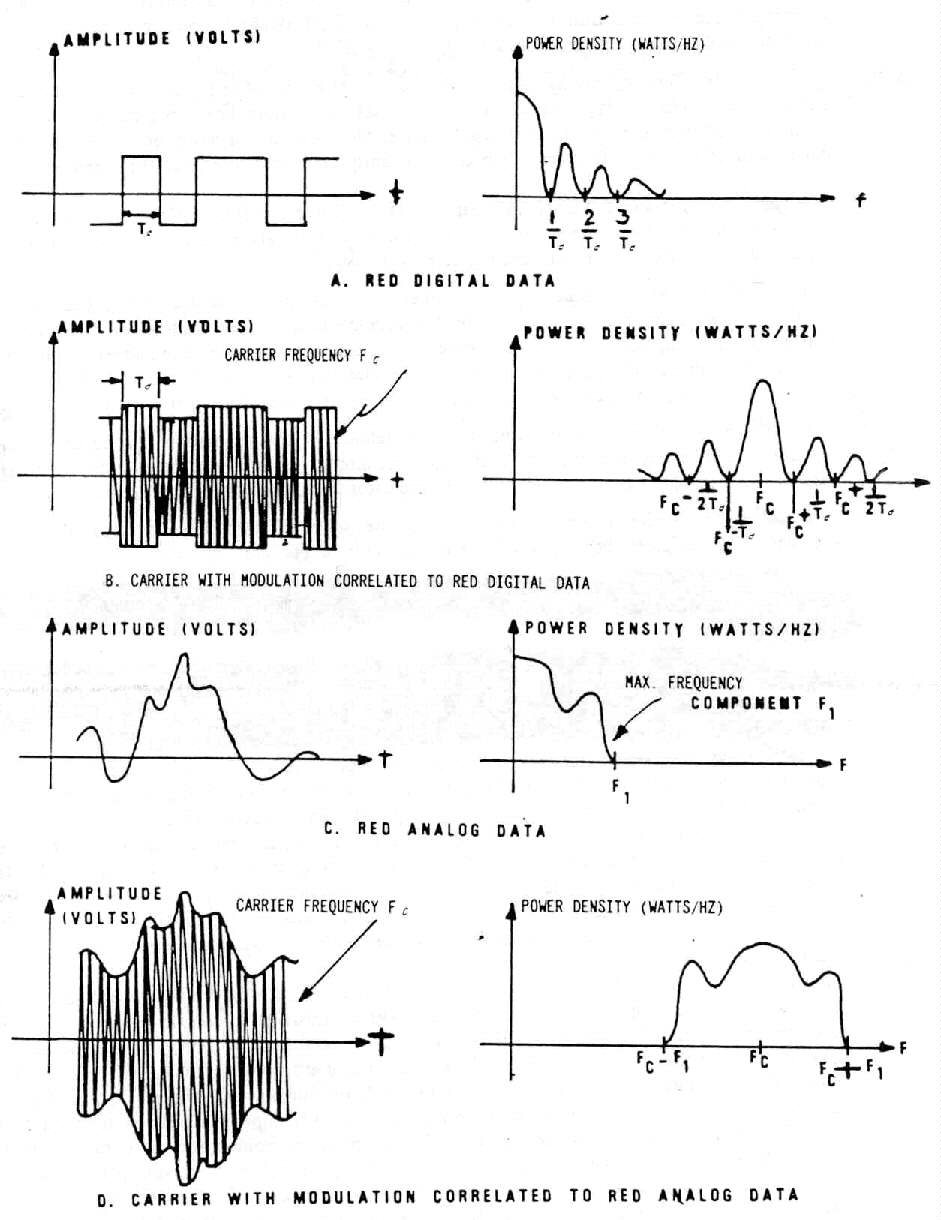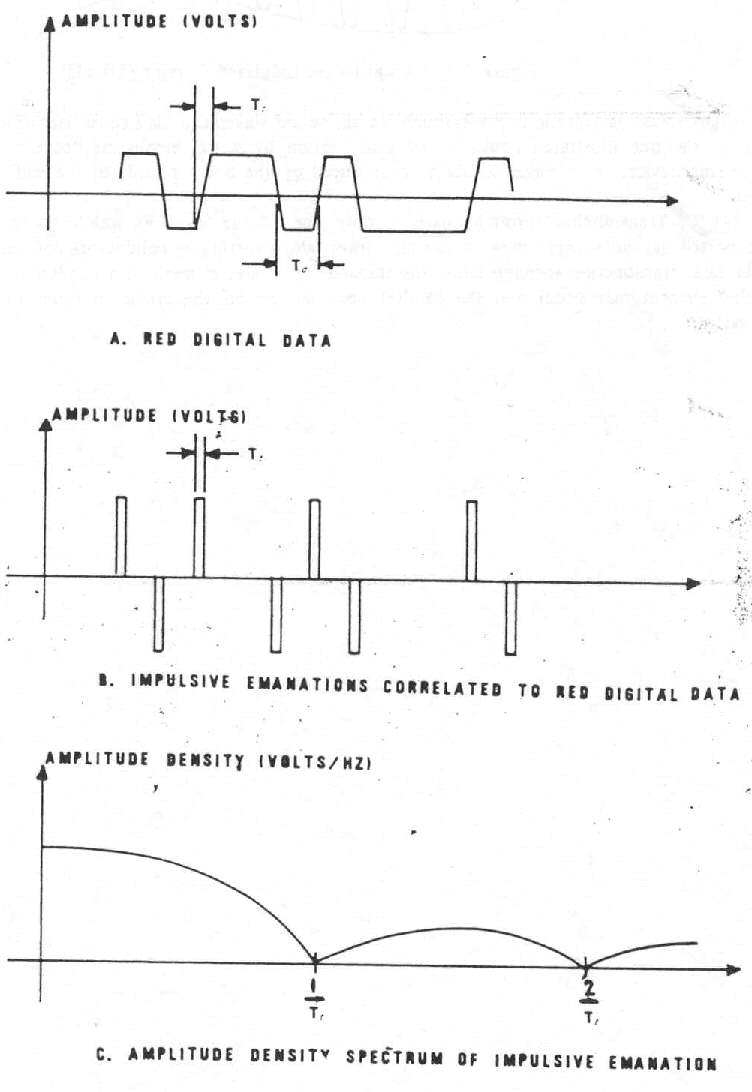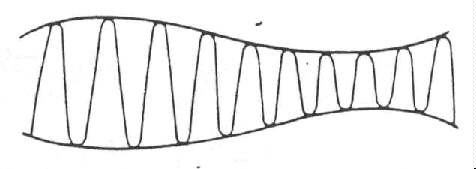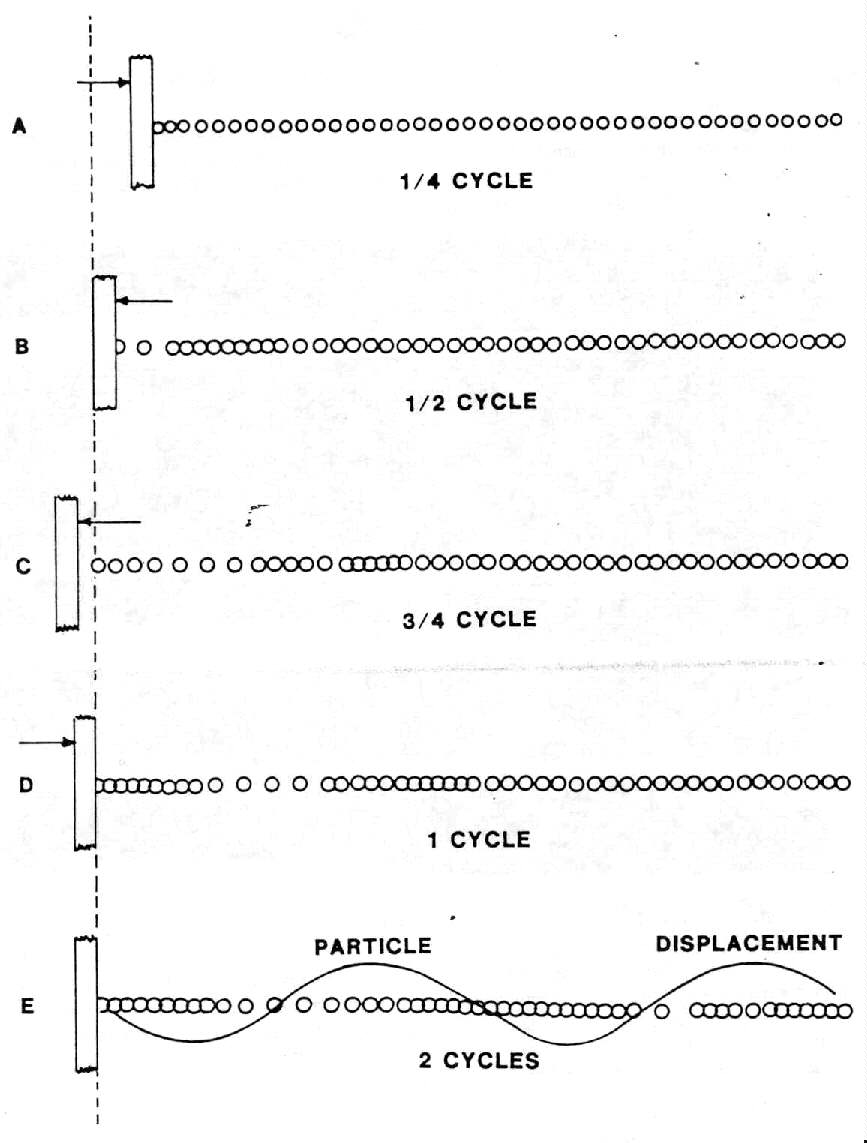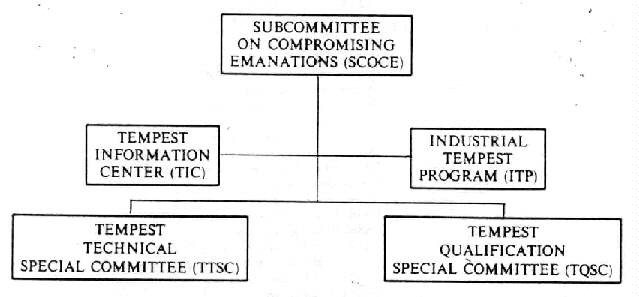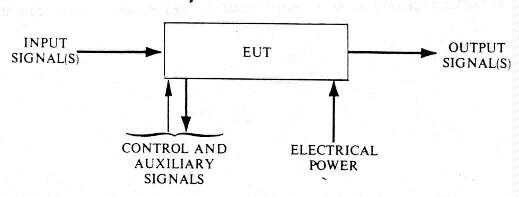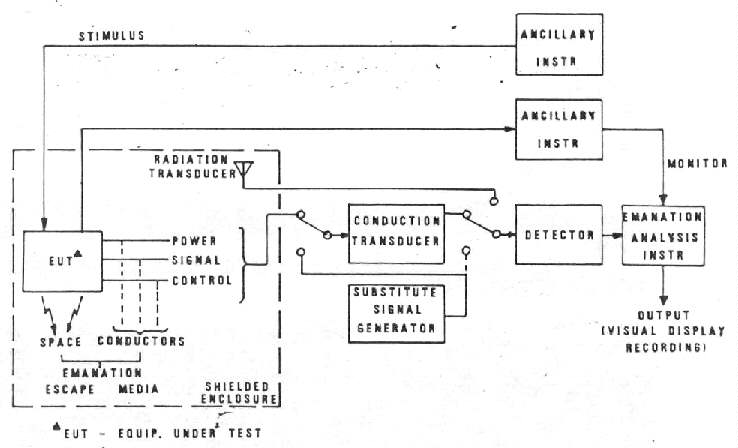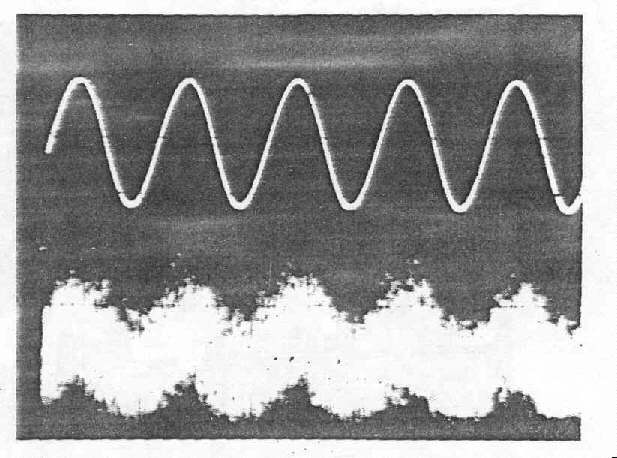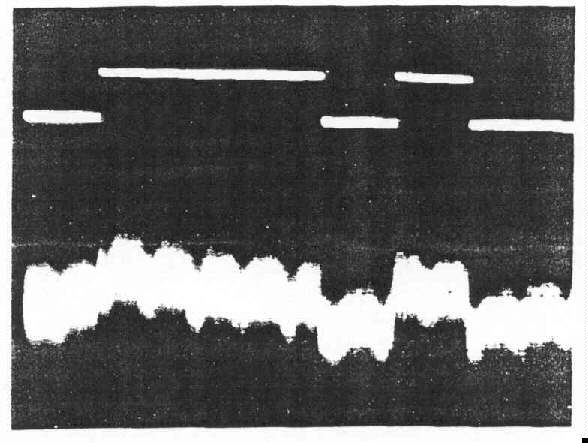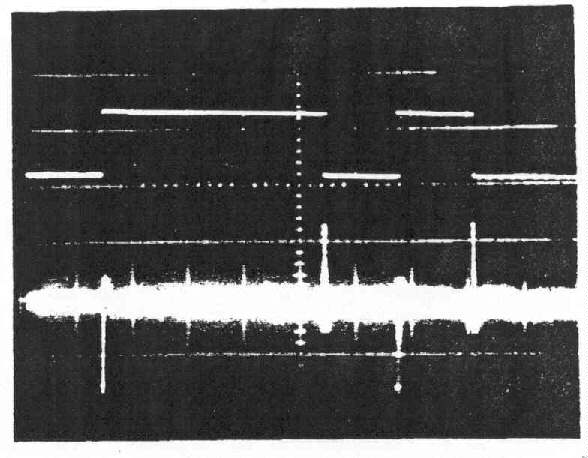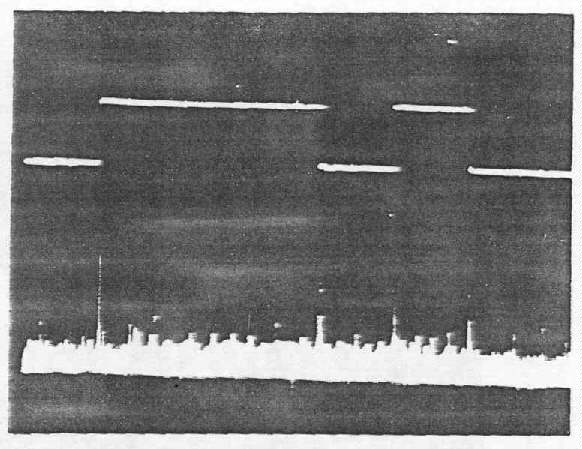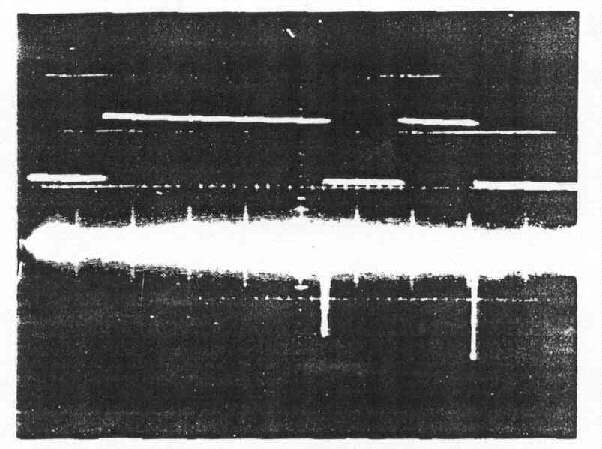TEMPEST DOCUMENTATION (U)
6-1. (U) General. - This chapter provides a listing of current TEMPEST
documentation available within the U.S. Government. If copies of listed
publications are required, the request should be made to the department or
agency SCOCE representative.
6-2. (U) Organizational Level Documents. - The majority of departments
and agencies within the SCOCE community have issued implementing publications
on the TEMPEST program. For information on these publications and their
availability you should contact the references provided in Table 5-2.
TABLE 6-1
NATIONAL LEVEL PUBLICATIONS |
Short Title |
Class |
Long Title |
| MIL-HDBK- 419 |
U |
Grounding, Bonding, and Shielding for Electronic Equipments and Facilities
(U) (To be Published) |
| MIL-STD-1680A/SH |
C |
Installation Criteria for Shipboard Secure Processing Systems (U) |
| NACSI 4003* |
S |
Classification Guidelines for COMSEC Information (U) |
| NACSI 5001 |
C |
Standardization of Compromising Emanations Laboratory Test Procedures
(U) |
| NACSI 5002 |
C |
Suppression of Compromising Emanations through Low-Level Operation (U) |
| NACSI 5003 |
C |
Basis for Electromagnetic Compromising Emanations Limits (U) |
| NACSIM 5000 |
C |
TEMPEST Fundamentals (U) |
| NACSIM 5001 |
C |
TEMPEST Procurement Guidelines (U) (To be published) |
| NACSIM 5002 |
C |
Technical Rationale: Basis for Electromagnetic Compromising Emanations
Limits (U) |
| NACSIM 5100A |
C |
Compromising Emanations Laboratory Test Requirements, Electromagnetics
(U) |
| NACSIM 5101A |
S |
Technical Rationale for Compromising Emanations Laboratory Test
Requirements, Electromagnetics and Controlled Space Evaluation
Procedures (U) (To be published) |
| NACSEM 5103 |
C |
Compromising Emanations Laboratory Test Standard, Acoustics (U) |
| NACSEM 5104 |
S |
Technical Rationale for Compromising Emanations Laboratory Test
Standard, Acoustics (U) |
| NACSEM 5105 |
C |
Administrative GuideLines for Compromising Emanations Laboratory Test
Standard Acoustics (U) |
| NACSEM 5106 |
S |
Compromising Emanations Analysis Handbook (U) |
| NACSEM 5108 |
U |
Receiver and Amplifier Characteristics Measurement Procedures (U) |
| NACSEM 5109 |
C |
TEMPEST Testing Fundamentals (U) |
| NACSEM 5110 |
S |
Facility Evaluation Criteria - TEMPEST (U) |
| NACSIM 5111 |
C |
Controlled Space Evaluation Procedures (U) (To be published) |
| NACSEM 5112 |
S |
NONSTOP Evaluation Techniques (U) |
| NACSEM 5201 |
C |
TEMPEST Guidelines for Equipment/System Design (U) |
| NACSIM 5203 |
C |
Guidelines for Facility Design and RED/BLACK Installation (U) |
| NACSEM 5204 |
C |
Shielded Enclosures (U) |
| NCSC 3* |
S |
TEMPEST Glossary (U) |
| NCSC 4* |
C |
National Policy on the Control of Compromising Emanations (U) |
| * Not releasable to contractors or contractor representatives. |
THIS PAGE IS INTENTIONALLY BLANK
GLOSSARY (U)
A.1. (U) Introduction. - The terms Usted and defined herein, are those
which are directIv related to the TEMPEST discipline. Engineering and technical
terms in common use are not included in this Glossary unless their definitions
are altered when these terms are applied to the TEMPEST discipline.
A
Access (U) - The ability and opportunity to obtain knowledge of national
security information or to be in a place where one could be expected to gain
such knowledge.
Acoustic Emanation (U) - Emanations in the form of free-space acoustical
energy produced by the operation of a purely mechanical or electromechanical
device equipment. Such emanations may be compromising under the definition
of "compromising emanations". (C)
Ambient Level (U) - Ambient levels may be classified into two categories:
(a) Test Environment Ambient Level -- Those levels of radiated and conducted
noise existing at a specified test location and time when only the equipment
under test is inoperative. Atmospherics, interference from other sources,
and circuit noise or other interference generated within the test detection
system comprise the "test environment ambient level''. (b) Equipment-Under-Test
Ambient Level -- Those levels of radiated and conducted noise which originate
in the equipment under test and are not compromising emanations.
Ambiguity (U) - A condition which precludes positive identification of specific
characters and functions utilizing the parameters of the detected signal.
This condition exists when the intelligence-related signal emanation can
be equated to more than one character or function.
Average Depth of Correct Characters (ADCC) (U) - [3 lines redacted.]
(C)
B
Bit Density Information (U) - [4 lines redacted.] (C)
BLACK (U) - A term applied to wire lines, components, equipment, and systems
which do not handle national security signals, and to areas in which no national
security signals occur.
BLACK Line (U) - Any Une, other than primary or secondary RED conductors,
external to national security information-processing equipment.
BLACK Signal (U) - Any signal (e.g.. control signal or enciphered signal)
which would not divulge national security information if recovered and analyzed.
C
Communications Security (COMSEC) (U) - The protective measures taken to deny
unauthorized persons information derived from telecommunications of the United
States Government related to national security and to ensure the authenticity
of any such communications. Such protection results from the application
of security measures (including cryptosecurity, transmission security, and
emissions security) to electrical systems generating, handling, processing,
or using national security information. It also includes the application
of physical security measures to communications security information or
materials.
Compromise (U) - Any occurrence which results in unauthorized persons gaining
access to national security information.
Compromising Emanations (CE) (U) - Unintentional intelligence-bearing signals
which, if intercepted and analyzed, disclose the national security information
transmitted, received, handled or otherwise processed by any
information-processing equipment.
Compromising Emanation Performance Requirement (CEPR) (U) - The maximum emanation
level permitted at the standard measurement point. When the CEPR is met,
there will be minimal chance that a compromising emanation will be detected
beyond the specified design radius.
Control Line (U) - Line intended for the transmission of control signals,
alarm indicators and fault determination between components of a system.
Controlled Space (U) - The three-dimensional space surrounding equipments
that process national security information within which unauthorized personnel
(1) are denied unrestricted access and (2) are either escorted by authorized
personnel or are under continual physical or electronic surveillance.
Correlated Emanations (CORR E) (U) - Detected emanations which correspond
to or contain a discernible relationship to any signal or process of known
characteristics. Correlated emanations may be compromising under the definition
of "compromising emanations".
Countermeasure (U) - An action, procedure, modification, or physical device
which is applied to reduce or to inhibit the generation of compromising
emanations.
D
Data Related Emanations (DRE) (U) - Detected emanations which have a discernible
relationship with a signal related to the data processed by the EUT, and
have been analyzed and determined to be not compromising.
Design Radius (U) - The radius of the sphere within which compromising
emanations, from an equipment located at its center will be contained when
the equipment meets the compromising emanation performance requirements.
Digraphic Information (U) - [3 lines redacted.]
Digraphic Processing (U) - Processing where the data (bits) are parallel
processed, and the characters are processed two at a time.
Dry Line (U) - An interface line of the equipment under test which does not
carry any signals while TEMPEST tests are in progress.
E
Emanation (U) - Unintended signals or noise appearing external to an equipment.
Emanations Security (EMSEC) (U) - This term is no longer used. The definition
of telecommunications has been expanded and emission security encompasses
the old definition of emanations security.
Emission Security (U) - That component of communications security (COMSEC)
which results from all measures taken to deny unauthorized persons information
of value which might be derived from intercept and analysis of compromising
emanations from crypto-equipment and telecommunications systems.
Equipment Radiation TEMPEST Zone. (ERTZ) (U) - A zone established as a result
of determined or known equipment radiation TEMPEST characteristics. The zone
includes all space within which a successful hostile intercept of compromising
emanations is considered possible.
Equipment Under Test (EUT) (U) - An equipment or group of equipments subjected
to TEMPEST testing,
EUT Exerciser Equipment (U) - Any equipment or device (not part of the EUT)
used during TEMPEST testing to make the equipment under test (EUT) operate,
e.g., a similar or complementary equipment for back-to-back operation or
an external clock source. This term may be used interchangeably with EUT
stimulus equipment.
F
Facility (U) - A physically definable area consisting of a controlled. space
which contains national security information-processing equipments.
Fingerprint Signal (U) - A unique emanation caused by the processing or transfer
of an information unit character, byte, etc.) by the EUT. (Also called
signature.)
Fortuitous Conduction (U) - Emanations in the form of signals propagated
along any unintended conductor. Such emanations may be compromising under
the definition of "compromising emanations".
Fortuitous Conductor (U) - Any conductor which may provide an unintended
path for signals. Fortuitous conductors include cables, wires, pipes, conduits,
and structural metal work in the vicinity of a radiation source.
Full Bit Emanation (U) - An emanation which correlates on a one-to-one basis
with the bits of the message code signal.
G
Generatrix (U) - The set of letters which are considered to be the cause
of a particular received TEMPEST signal, arranged in order of probability.
Generatrix Family (U) - The groups (sets of generatrices) into which the
letters of the alphabet are assigned by the TEMPEST encoder. Also, the groups
into which the letters are assigned at the output of the detector for analysis
purposes.
Generatrix Sequence (U) - The sequence of generatrices resulting from a test,
where a representative test message for the EUT is processed: one generatrix
for each received signal.
H
Hazard (U) - A measure of both the existence and the compromising nature
of an emanation. A hazard exists if and only if compromising emanations are
detectable beyond the controlled space.
I
Impulsive Emanation (U) - An emanation composed of impulses,
Information Ratio (IR) (U) - A measure of the amount of information which
can be derived from a detected signal. It is the ratio of the amount of
information contained in a signal to the amount of information necessary
for 100 percent recovery of plaintext information.
L
Line Conduction (U) - Emanations produced on any external or interface line
of an equipment which, in any way alter the signal on the external or interface
lines. The external lines include signal lines, control and indicator lines,
and a.c. or d.c. powerlines.
M
Monitor Signal (U) - The signal to which a detected emanation is compared
for determining correlation: a monitor is usually a RED signal.
Monographic Information (U) - [3 lines redacted.]
Monographic Processing (U) - Processing where each character is sequentially
processed in a bit parallel format.
Multichannel Information (U) - Information which results when emanations
from multiple TEMPEST channels are used to extract information correlating
to a single message being processed.
N
Noise (U) - Disturbances superimposed upon a signal that tend to obscure
its information content.
Nontunahle (U) - A term used to describe a test, or test instrumentation,
in which frequency coverage is selected in one or more discrete increments;
i.e., not continuously variable. Nontunable detection systems do not contain
a demodulator.
P
Parallel Information Unit (U) - Two or more bits arranged in a deterministic
order which are transferred or stored simultaneously as a unit. One parallel
information unit is transferred when a clock or trigger pulse causes the
entire unit to be simultaneously gated out of a register or other storage
device. Two or more units can form a larger unit.
Polygraphic Information (U) - [2 lines redacted.]
Polygraphic Processing (U) - Processing where the data (bits) are parallel
processed, and the characters are processed more than one at a time.
Powerline Conduction (U)--See Line Conduction.
[2 lines redacted.]
[3 lines redacted.]
Primary Red Conductor (U) - Any conductor intended to carry national security
information and terminating in RED equipment or in the RED side of
crypto-equipment or isolation devices.
R
Recoverable Zone (U) - The three-dimensional space surrounding an equipment
or system processing national security information within which it is
theoretically possible to recover the information processed. For radiated
signals, this term may be used interchangeably with Equipment Radiation TEMPEST
Zone (ERTZ).
RED (U) - A term applied to wirelines, components, equipment, and systems
which handle national security signals, and to areas in which national security
signals occur.
RED/BLACK Concept (U) - The concept that electrical and electronic circuits,
components, equipments, systems, etc., which handle national security plain
language information in electric signal form (RED) be separated from those
which handle encrypted or non-national security information (BLACK). Under
this concept, RED or BLACK terminology is used to clarify specific criteria
relating to, and to differentiate between such circuits, components, equipments,
systems, etc., and the areas in which they are contained.
RED Line (U) - A primary or secondary RED conductor.
RED Signal (U) - Any signal (e.g., plain text, key, subkey, initial fill
or control signal) which would divulge national security iriformation if
recovered.
Risk (U) - The probability that a hostile entity will successfully exploit
a particular telecommunications or COMSEC system for intelligence purposes;
its factors are threat and vulnerability.
S
SCOCE (Subcommittee On Compromising Emanations) (U) - This subcommittee,
composed of representatives from various government organizations, is charged
with specific responsibilities designed to implement Government-wide programs
for the control and suppression of compromising emanations. In carrying out
these responsibilities it is an instrument for exchanging technical TEMPEST
information, techniques, and criteria among Government organizations and
their contractors.
Secondary RED Conductor (U) - Any conductor, other than primary RED, which
connects to RED equipment, the RED side of crypto-equipment, or the RED side
of isolation devices, which does not intentionally carry national security
information; but because the coupling mechanism with the RED equipment might
carry compromising infoIrmation, is designated secondary RED (e.g., indicator
lines, control Lines, timing lines, etc.). Power distribution panels and
grounding systems serving RED wire lines and equipments may also be so
designated.
Short Cycle Operation (U) - A method employed in TEMPEST testing of cryptographic
equipments to facilitate identification of key-correlated emanations; whereby,
the equipment is modified to generate a repetitive key. (C)
Signal (U) - A fluctuating quantity, such as voltage, current. electrical
field strength, sound pressure level, etc., the variations of which convey
irfformation.
Skewed Parallel Signal (U) - [3 lines redacted.] (C)
Standard Measurement Point (U) - The point where the compromising emanation
performance requirement (CEPR) applies. For an electric or magnetic field
emanation, the standard measurement point is one meter from the equipment
under test. For a conducted emanation, the standard measurement point is
at the design radius.
T
Telecommunications (U) - The transmission, communication, or processing of
information, including the preparation of such information, by electrical,
electromagnetic, electromechanical or electro-optical means. (Note: This
definition includes the processing of information by noncommunicating equipment.)
TEMPEST (U) - A short name referring to investigations and studies of
compromising emanations. It is often used synonymously for the term "compromising
emanations", e.g., TEMPEST tests, TEMPEST inspections.
TEMPEST Channel (U) - An unintentional communications channel which conveys
information about the information processed through the intentional
communications channel.
TEMPEST Encoding (U) - An unintentional process which results in the altering
of information before it is emitted into the TEMPEST channel.
TEMPEST Test (U) - A laboratory or on-site (field) test to determine the
nature and ampliude of conducted or radiated signals containing compromising
information.
Test Detection System (U) - The instrumentation used in performing a TEMPEST
test including the transducer, detector, display devices, recording devices,
filters, coaxial switches, etc.
Test Message (U) - A series of characters or signals chosen to be processed
by the equipment under test during TEMPEST testing.
Transition Density Information (U) - [4 lines redacted.] (C)
Tunable (U) - A term used to describe a test, or test instrumentation designed
to cover a fixed frequency range in continuous or stepped contiguous (within
the specified bandwidth) increments. Tunable detection systems may contain
a demodulator.
U
Undesired Signal Data Emanations (USDE) (U) - Compromising emanations or
a primary RED line amplitude density spectrum which exceeds Emits specified
in the applicable TEMPEST standard.
W
Wet Line (U) - An interface line of the equipment under test, where the signal
normally transmitted over the line is present.
|

